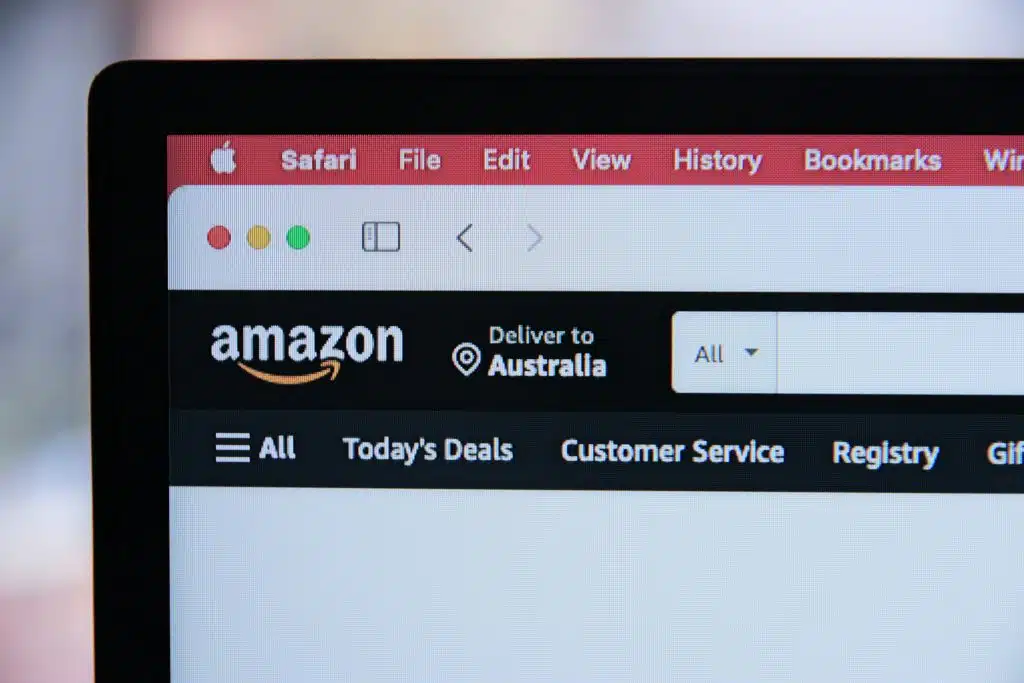As an ecommerce seller, you must make an effort to protect your brand on Amazon.
It’s devastating when malicious actors compromise businesses and products. Issues like counterfeit products and stolen identities can damage your reputation and lose trust among your customers.
Since Amazon is the leading global ecommerce platform, hackers are especially drawn to it. Recently, Amazon suffered a data breach that resulted in 2.8 million stolen records. Since hackers are always a threat, sellers should always stay aware and safeguard their brand.
Here are reasons why you should always protect your brand name, a look into the security services that Amazon offers, and other ways that sellers can stay vigilant.
Risks When Selling on Amazon
There are many tactics that hackers use to compromise your products and business information. Here are the most common ones:
- IP theft. Intellectual property (IP) theft is when a counterfeiter steals your brand identity, such as your designs or inventions, and uses them toward their own products.
- Counterfeit products. Different from IP theft, counterfeiting is when other sellers list “copycat” products that look and function similarly to yours.
- Unauthorized resellers. Resellers work in different ways. They may purchase your products and resell them under a different brand, inflating the costs, or they may copy your brand name and create fake listings featuring your products.
- Fake reviews. Malicious accounts will spam your review section with fake complaints with the intent of damaging your reputation and decreasing your sales.
- Hacking and hijacking. Hijacking can mean different things, but mainly refers to a scammer who has gotten hold of your sensitive data, such as your ASINs. This was likely done after a malicious actor hacked your account and stole your product data.
- Price erosion. Hackers who sell counterfeit products or steal your ASINs may list your items or similar ones at significantly cheaper prices, eroding your profit margins and devaluing your brand.
Amazon Services to Protect Your Brand
The good news is that Amazon is very proactive in protecting its business and other sellers. Because of this, they offer different services that help sellers protect their reputations and maintain customer trust.
Amazon Brand Registry
The Amazon Brand Registry is a program exclusively available to brands that have a registered trademark (more on that later). Sellers can access various resources and tools that safeguard their business and offer an extra layer of protection against hackers.
Use these resources and tools to protect your brand:
- Infringement identification
- More control of product pages
- Features like A+ Content and Sponsored Brands
- More protection for your listings
You can sign up for the Brand Registry for free on Seller Central. Sellers must provide their brand information and company data.
Amazon Transparency
The Amazon Transparency program offers codes to confirm a product’s authenticity. Unlike ASINs and other identifiers, Transparency codes are unique sequences applied to individual products.
After a customer purchases an item, Amazon’s warehouse employees scan the barcodes to ensure only genuine products are sent to the buyer. This not only improves brand protection but also establishes customer confidence, especially when purchasing branded and luxury items.
Amazon Project Zero
Amazon Project Zero is a program where sellers take action against counterfeiters without intervention from the ecommerce giant. Here’s what you can do under Amazon Project Zero to protect your brand:
- Self-removal of counterfeit items
- Automated IP protection
- Tools to track each product unit
To sign up for Amazon Project Zero, sellers must have a government-registered trademark and a Brand Registry account. Brands must also have a low acceptance rate for infringement reports.
FNSKU
If you’re an FBA seller, brands can apply FNSKU numbers to their inventory. FNSKU is a unique identifier that distinguishes your items from similar products. This code can protect your brand from counterfeiters and prevent fraudsters from creating fake listings.
Plus, FNSKU numbers are easier for Amazon employees to track and manage, resulting in more streamlined fulfillment.
Counterfeit Crimes Unit
The Amazon Counterfeit Crimes Unit (CCU) is a program where the ecommerce giant works with law enforcement to hold bad actors accountable for their actions.
This program helps sellers navigate the e-commerce legal system, conducting investigations and filing lawsuits. Amazon CCU is an international program, so sellers worldwide can access these benefits.
Other Ways to Protect Your Brand on Amazon
Sellers can and should take brand protection into their own hands. Here are solutions that any ecommerce company can implement.
Register a Trademark
Even though trademark registration is a significant investment, it’s still a crucial step that all sellers must take. Trademarks not only protect your brand from malicious sellers but also differentiate your business from competitors. Plus, trademarks improve your brand reputation.
Every country and region has its own method for registering a trademark. Amazon offers an IP Accelerator service to connect sellers with legal services that offer trademark support.
Two-Step Login
Safeguarding your Amazon account is one of the easiest ways to prevent hackers, with two-step authentication being one of the best seller identity verification methods.
If someone signs into your Amazon account, you’ll need to enter a code sent to another device, usually a phone. Amazon will also request an alternate contact method in case you lose access to that device.
Sellers can also enable this feature by going to Settings > Advanced Security Settings and turning on Two-Step Verification. When signing up for Seller Central, Amazon will recommend that sellers use two-step authentication.
Advertising and Marketing Defense
Maintaining a strong brand presence is an effective way to deter hackers before they compromise your account. There are various advertising and marketing tactics that can protect your brand while increasing sales. These include:
- Bidding on brand names
- Including negative keywords
- Creating different ad groups
- Use competitive intelligence tools
- Increase Buy Box visibility
- Monitoring organic and paid reports
Branded Content
Your unique brand and trademark can be used in many ways, such as in your Amazon content. Include any trademarks, such as your logo or phrase, in your product copy and images.
If you’re including product videos, include a watermark. Add any other signifiers to your product description, such as patents or trademarks. If you can access A+ Content, take advantage of those features to better separate your brand from counterfeiters.
Related content: Brand Gating on Amazon
Monitor Reviews
Another simple way to protect your store is by checking your reviews regularly. Malicious actors attempt to attack sellers in the review section.
Report any reviews that look fake or violate Amazon’s policy. Amazon will remove any suspicious reviews or delete any excessive reviews from the same account.
MAP Policy
Pricing strategies can also protect your brand, specifically by implementing a minimum advertised price (MAP) policy.
A MAP policy is a minimum price that sellers set when other brands resell their items. Even if you’re not in the business of reselling, this strategy is an effective way to protect your products.
Sellers can set MAP prices on Amazon or most third-party platforms. Depending on the program you use, you can also get real-time alerts if a reseller violates your MAP policy.
Protect Your Brand on Amazon: Do You Need Help?
You dedicated a lot of time and effort to building your Amazon business, so it would be devastating if a hacker or counterfeiter compromised your hard work. Identify the ways that malicious actors could destroy your reputation, and take all these efforts to protect your brand.
Another option that sellers have is to work with a third-party agency. We create a unique strategy for every seller to help them grow their business on Amazon.
Author







